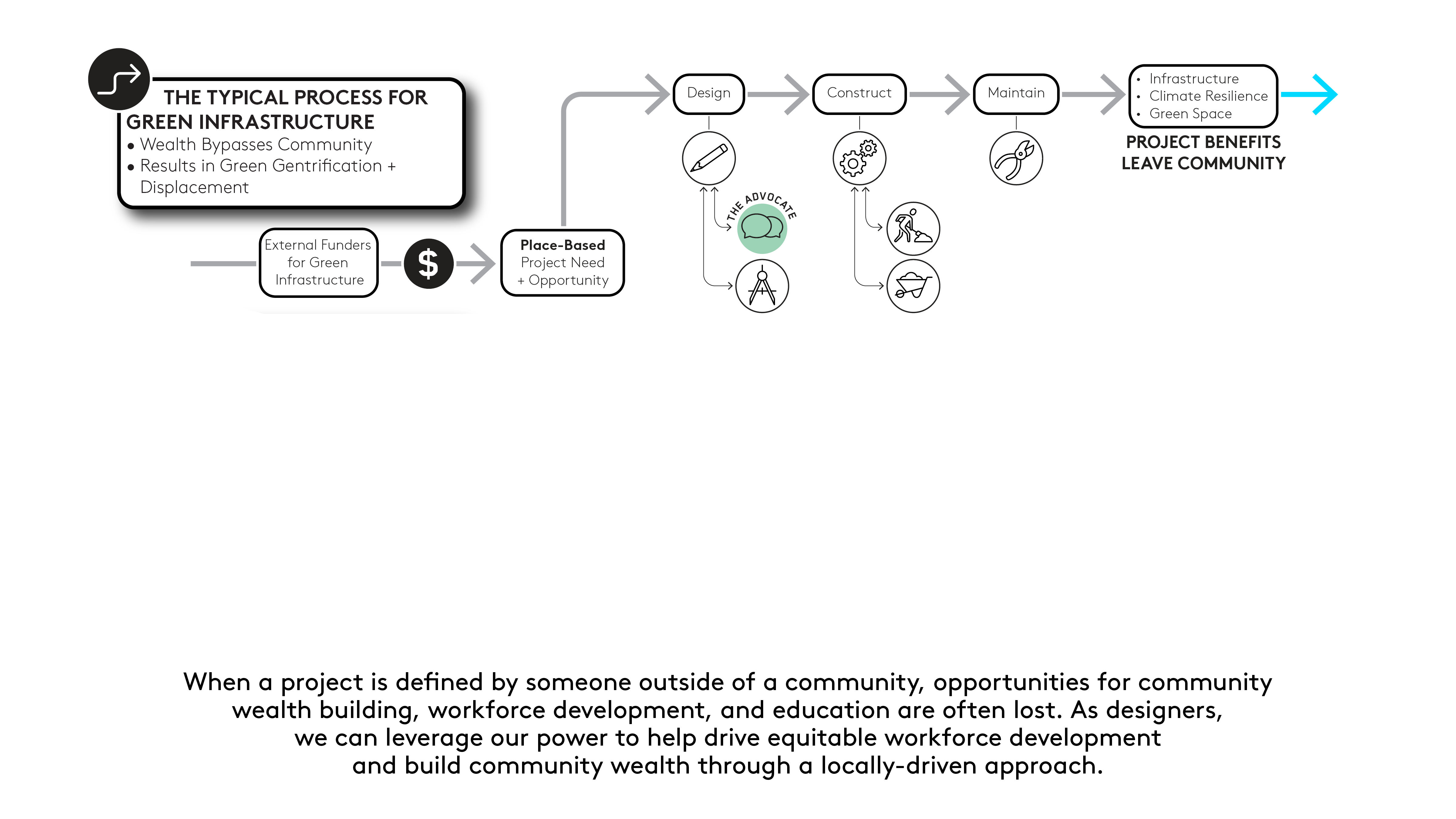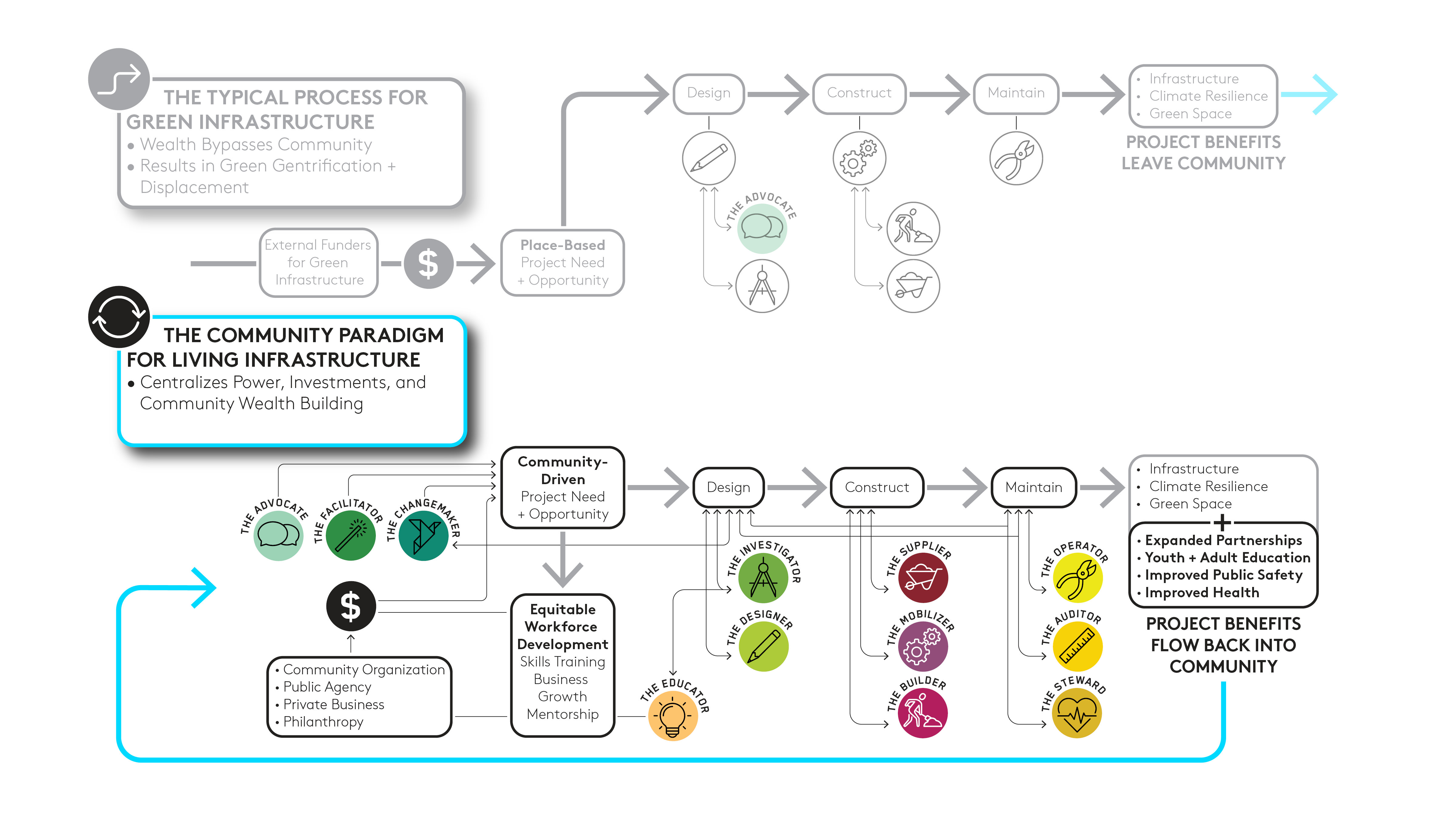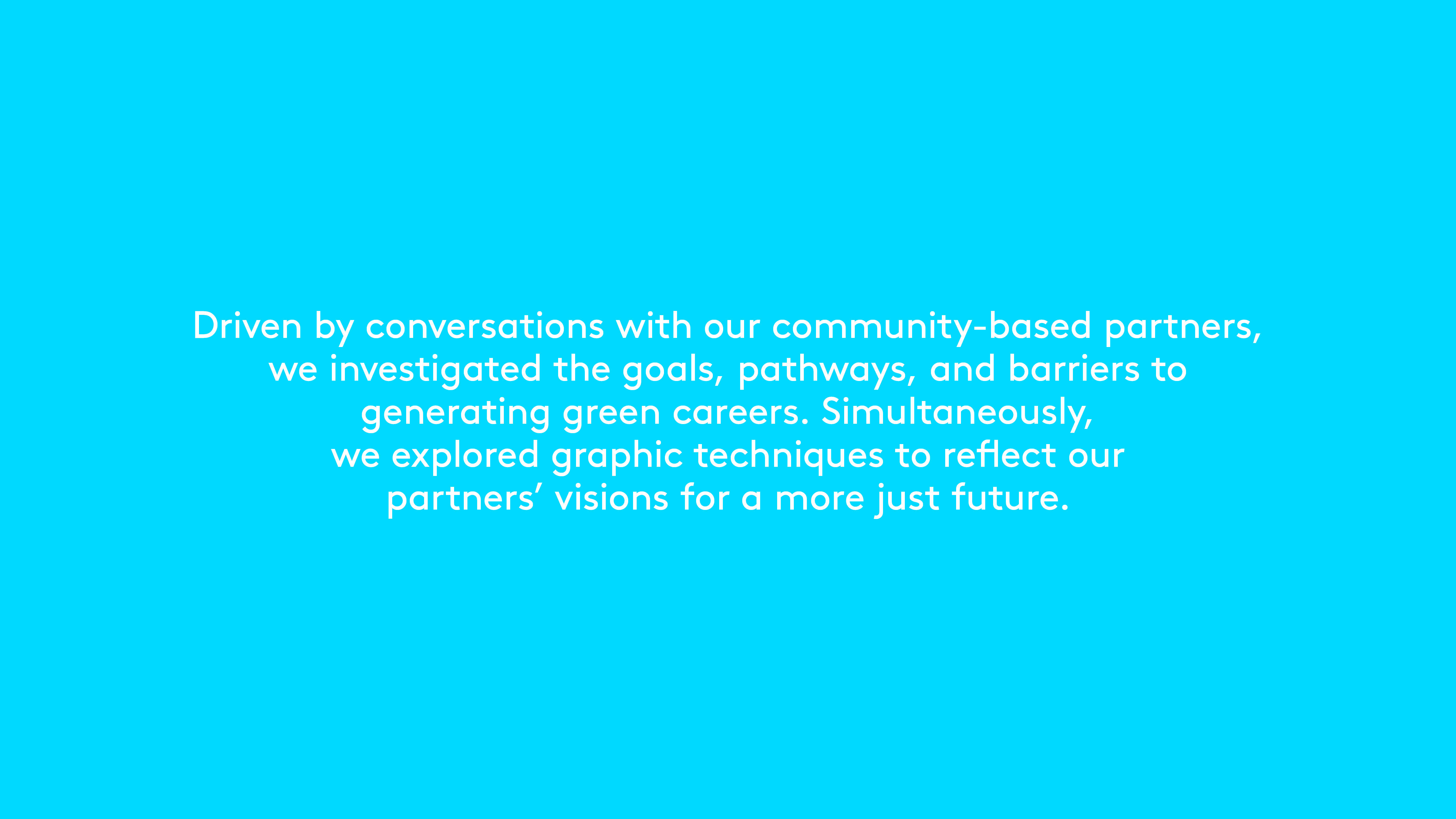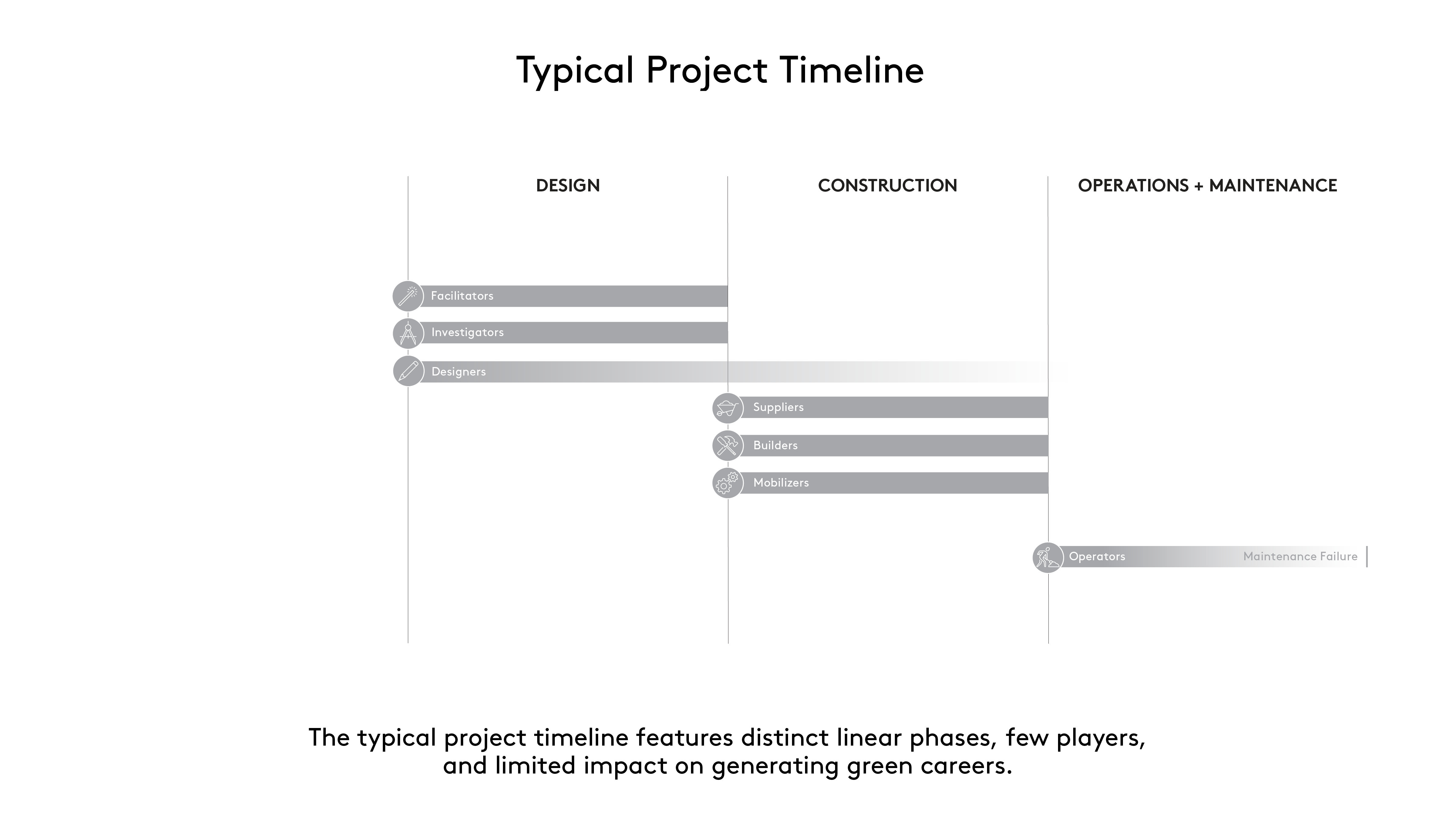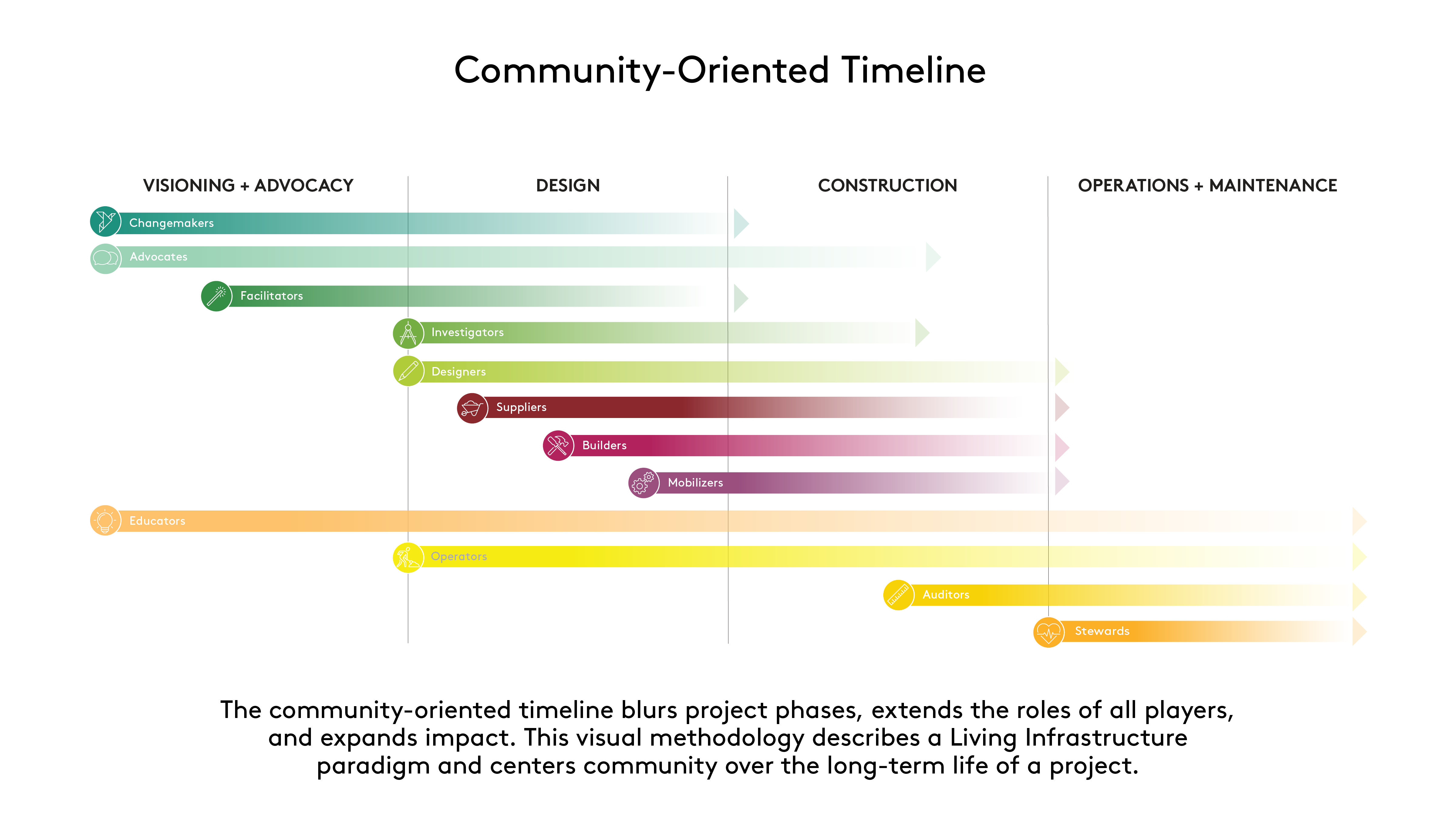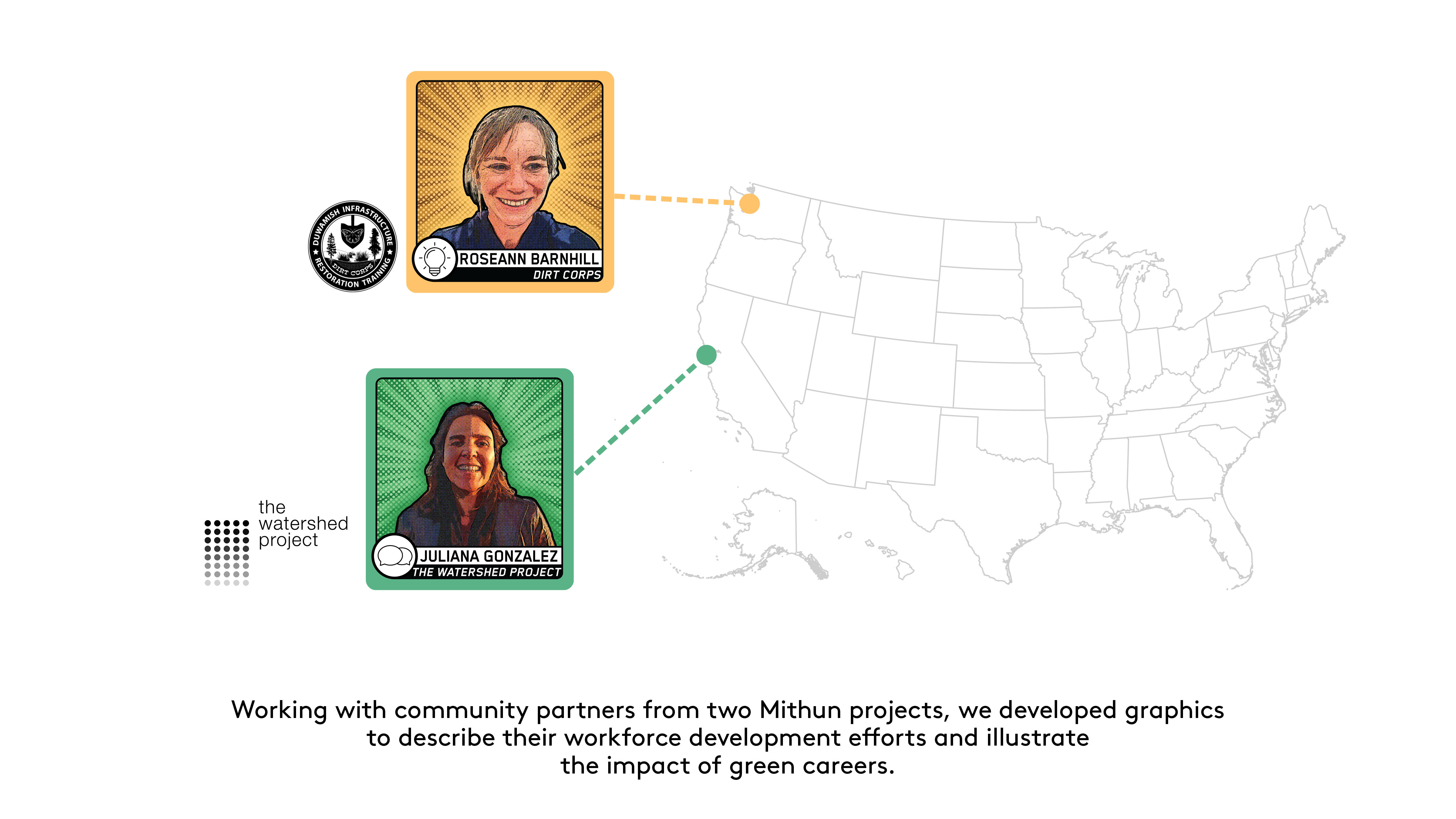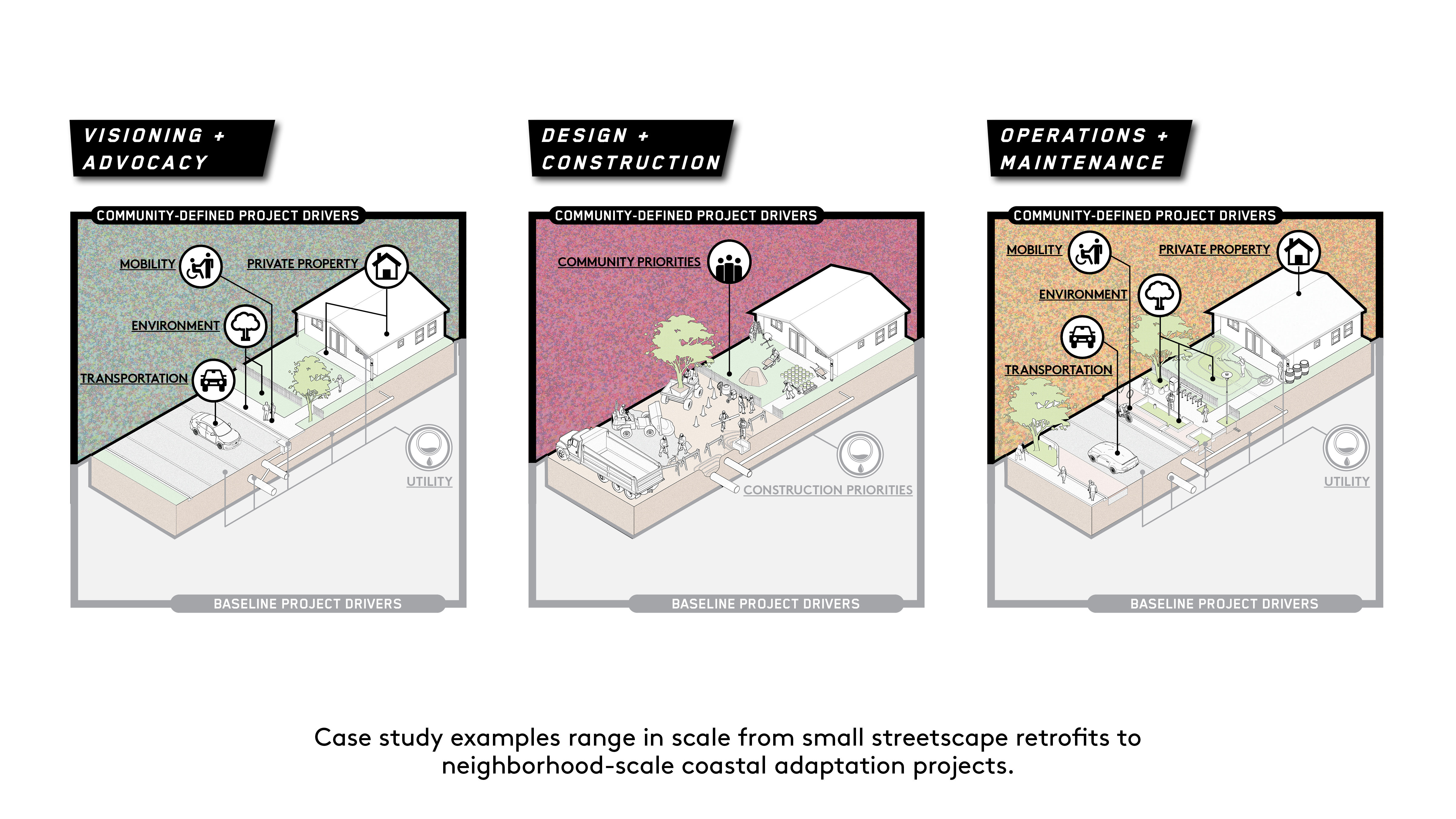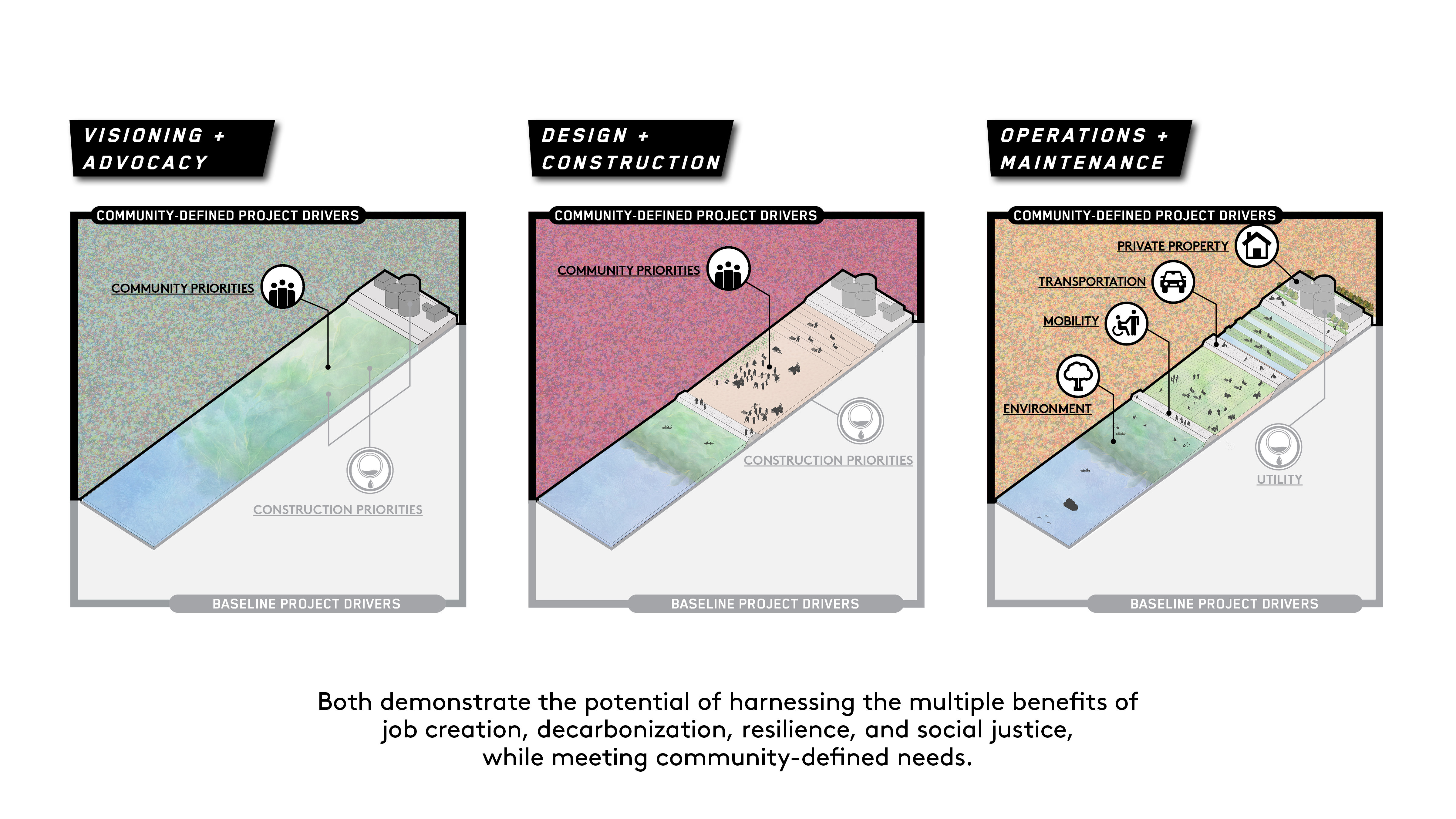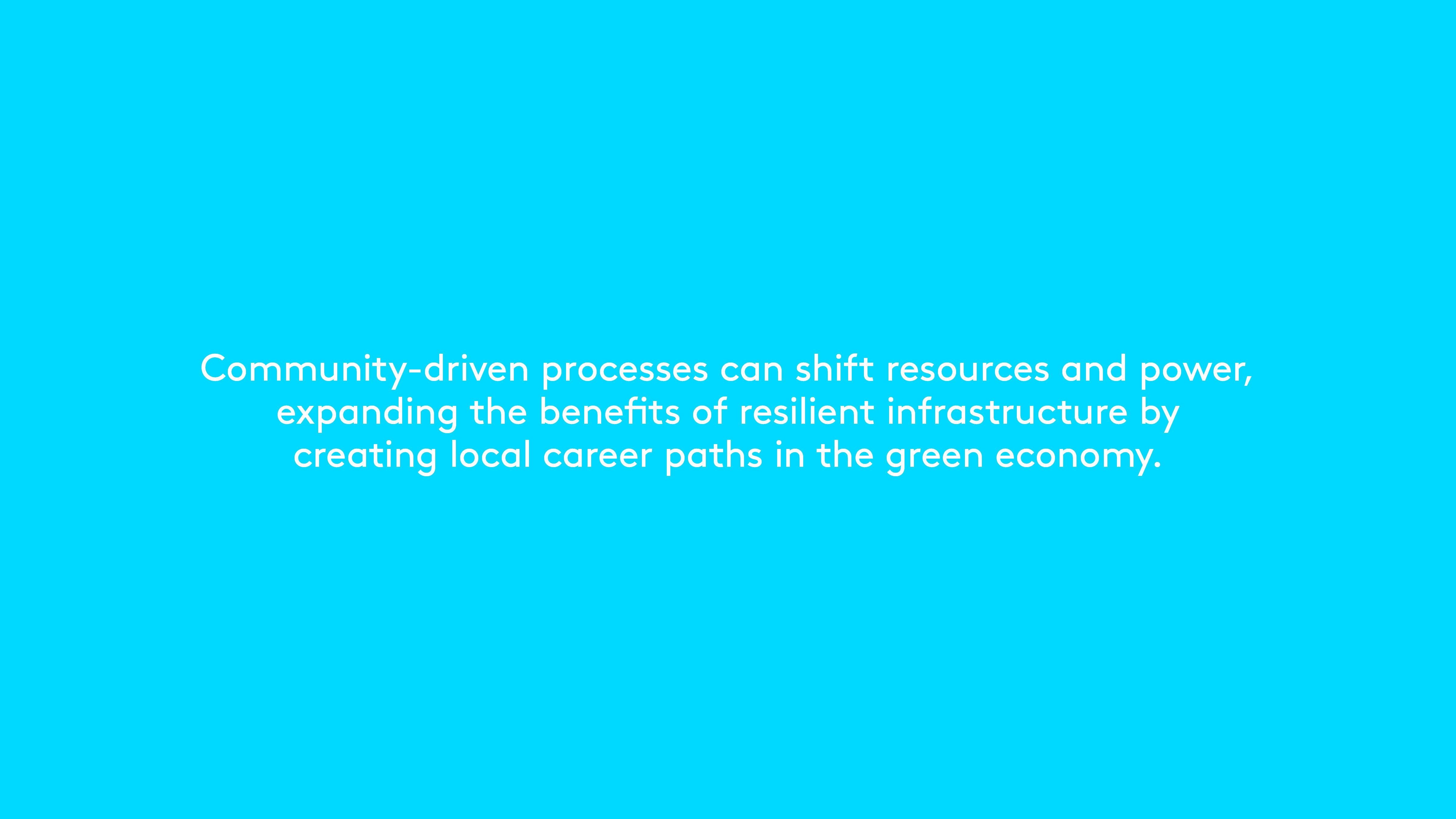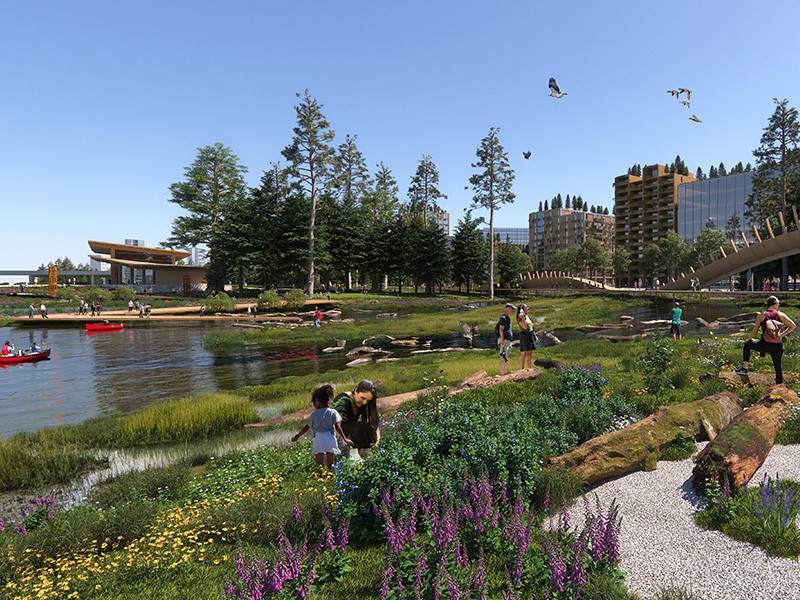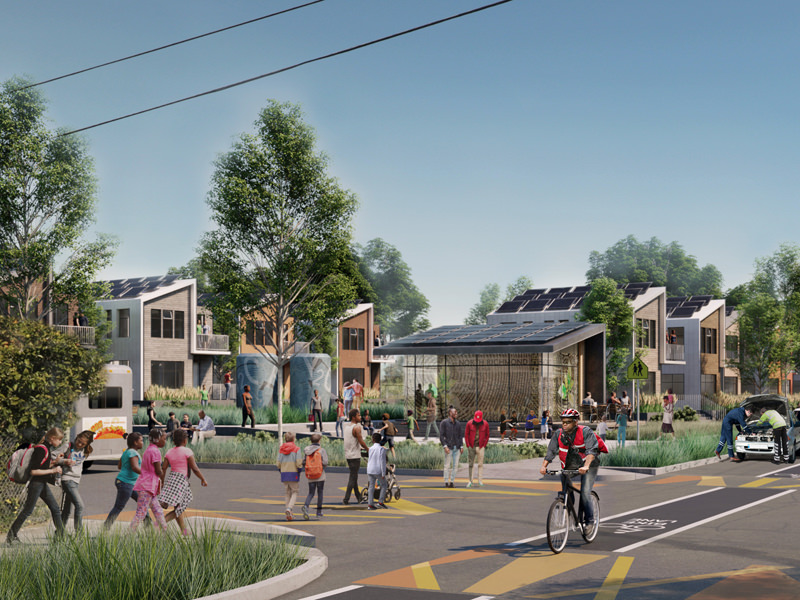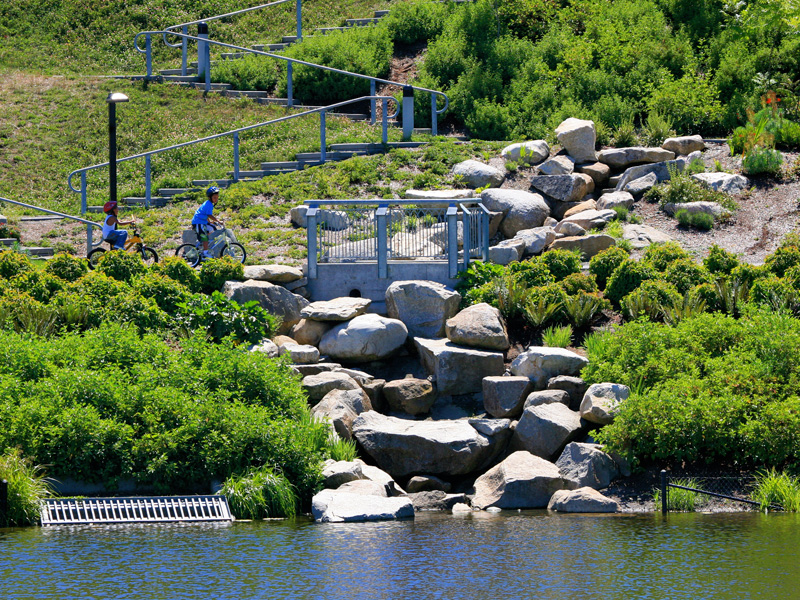Investing in People through Workforce Development
Vision
Equitable workforce development drives jobs and justice, helping to secure community agency and stability in a decarbonizing world. When engaging in living infrastructure projects, it is imperative that planning and design professionals shape this work to support a just transition to a regenerative economy.
As design practice and governments begin to embrace more integrative approaches to addressing infrastructure and climate change resilience, still little attention is paid to how these projects are structured to distribute project benefits and wealth. Too often, the people who live in places where green infrastructure is most needed are left out of the planning process, cutting them off from opportunities to build in additional layers of social and economic benefit.
Workforce development, by creating access to green career pathways, has the capacity to transform lives and livelihoods in these frontline communities. Policymakers, developers and traditional funding sources present major hurdles and resistance to prioritizing such efforts. Landscape architects often feel helpless in the face of that resistance. But design can speak loudly, and this Mithun R+D team found that the imperative for a paradigm shift in the standard design process could be effectively illuminated through innovative graphic strategies. By centering people at every step of the process, projects can prioritize community first.
Research
This research was developed as a response to the Landscape Architecture Foundation’s (LAF) Green New Deal Superstudio. The call to action took inspiration from the framework of the Green New Deal—positing jobs, justice, and decarbonization as three key goals—and asked what role designers can play in building this agenda. Mithun has been an industry leader in decarbonization for many years. This team asked, how can we promote jobs and justice as equal partners to decarbonization within Mithun’s work? To focus this effort, the team of landscape architects chose to study two ongoing projects that exemplify the range of scales and geographic distribution of the firm’s resilience work. They then identified community partners from these projects as well as other contacts in the worlds of equity and green infrastructure from whom they hoped to learn.
The research began in a series of conversations with these community partners. While discussing goals, barriers and needs for generating green career paths in workforce development, the study explored what these two projects could look like in an ideal world. These conversations were distilled into a deceptively simple tenet: focus on people, instead of place. External investments in place often create inequity via green gentrification, shorting the economic circuit and bypassing communities. Many communities have been thinking, talking and organizing for years before targeted green infrastructure dollars arrive, and they are the ones saddled with gentrification and/or deferred maintenance of built work for years after. Designs need to expand both backwards and forwards in time – from visioning and policy through long term operations – as well as promote equitable access to the new green jobs needed to bring these projects to life, within the communities they are meant to serve.
The framework of a just transition proved helpful for pushing beyond the agenda of the Green New Deal, prioritizing ecological and social well-being, self-determination, care and cooperation while creating meaningful work for all to live well. Imagining how projects could embrace just transition principles, the team developed diagrams that contrast the typical process of infrastructure development with a community driven approach where workforce development is prioritized. The term “living infrastructure” was adopted to describe this system in which life in all its forms is the primary driving factor: human life, plant and animal life, community life and ecological life.
The graphic style of the study findings reflects the infectious pride and energy that the community partners have for their work, and was developed with their input. The artwork is inspired by comic book superheroes, with playing cards representing the myriad roles and career paths that can be jumpstarted through workforce development programs, and which are needed for the success of living infrastructures. It is hoped that these visualizations honor the profound dignity and integrity in paid work that preserves and helps concentrate wealth within communities.
Looking Forward
This submission was one of 670 entries nationally to the LAF Superstudio, and has been shared widely as part of a curated set featured on the LAF website, highlighted at an online Showcase, presented in a webinar, and displayed at the LAF summit in April 2022. Some community partners continue to utilize the visualizations to illustrate the power of community investment. Mithun’s landscape architecture practice frequently applies these findings when scoping and visualizing resilience projects.
While the focus of this research was resilience work, many findings apply to all of Mithun’s work in one way or another. Designers of all kinds can embrace their agency to center communities in the design process:
Relationship Building:
-
Take a relational—not transactional—approach to engagement. Take communities’ lead in how to communicate and what to prioritize, making sure to follow up and check in regularly.
-
Get communities paid. Write paid community advisory boards into scoping and contracts. Hire community members as experts to be part of the design team. Invite community-based organizations to lead engagement.
-
Design the conversation. Asking the right questions and scoping the work to focus on people can prompt clients to think differently about the potential impacts of projects.
Advocacy:
-
Promote accessible local workforce development to support projects that will have a lasting impact in communities.
-
Champion anti-displacement efforts that build in other stabilizing wealth-building opportunities for community members.
-
Fight for policy change that supports the up-front work of relationship building and centering community power.
Visualization:
-
Graphics should recognize that no landscape (or building) is static: they are not just occupied, they are worked and put to work.
-
Highlight the process and effort required before, during and after the project, instead of just the polished physical product.
-
Illustrate futures in which communities are front and center, performing meaningful, dignified work caring for the land and one another.
This research and the resulting illustrations can help communities, clients and policymakers see the possibilities of a community-centered approach. Further, the detailed process tools can be useful for communities to advocate for themselves and secure grant funding to support equitable workforce development as part of local infrastructure projects.



